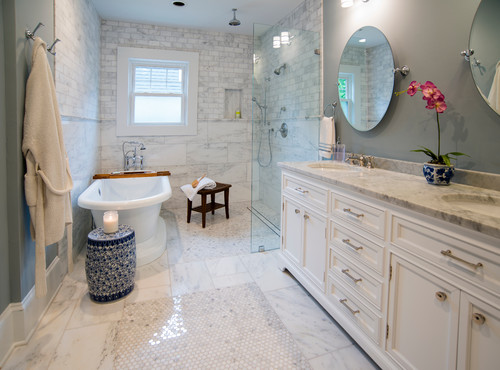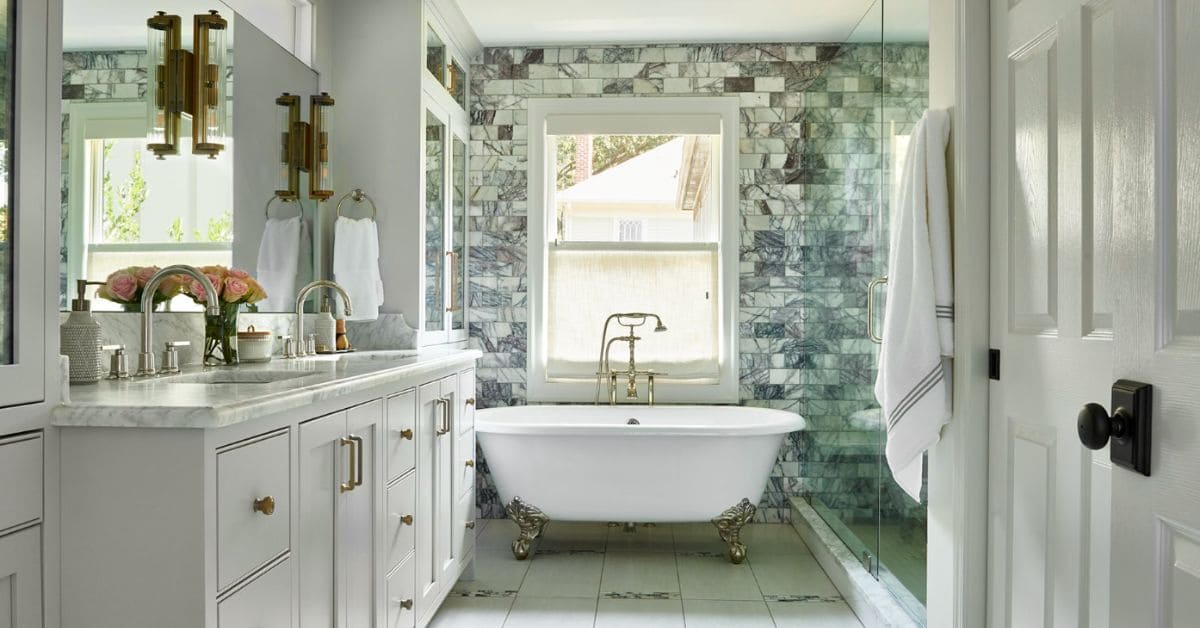The Pros and Cons of Walk-In Showers & Bathtubs
A lot of the Atlanta bathroom remodels we looked at last week feature both a walk-in shower and a bathtub. And while it’s great to include both fixtures in a master bath, how do you know which you should opt for in a second bathroom as a stand-alone fixture?
Here are some things to know about walk-in showers and bathtubs for your bathroom remodel in Atlanta.Space
It goes without saying that the optimal bathroom arrangement includes both a bathtub and a walk-in shower. Unless you’re remodeling your master bathroom, however, spatial limitations usually dictate that you choose only one.

If your second bathroom is medium-sized, it may seem smart to select a bathtub with a shower combination so that you have the best of both worlds. But in reality, a walk-in shower is a popular choice in both medium and small-sized bathrooms.
If you’re going to take time to soak, you’ll want to be in a spacious and relaxing master bathroom environment anyway, so in a second and smaller bathroom, you may as well conserve floor space for your vanity or extra storage. In general, it’s best to spend your space where you’ll spend your time, and in a secondary bathroom, that’s in a prep area rather than a soaker tub.
The only exception would be if you are remodeling to accommodate bath time with small children. In this instance, if you do want to have both bathtub soaking and on-the-go showering options available, a bathtub/shower combo is best.
Cost of a Walk-In Shower or Bathtub
HomeAdvisor cites bathtub fixture prices ranging between $400 and 600, while similar quality walk-in showers are $400. (Prices do not account for installation costs.) Given these figures, walk-in showers are comparable to or more affordable than bathtubs as far as up-front costs are concerned.
Even in the long run, walk-in showers continue to save more money because they conserve utility costs over time. Assuming average shower times, HomeAdvisor reports that showers “use half to less than half of the water used by a bathtub, especially when using low-flow shower heads,” meaning that walk-in showers win on both initial and eventual cost analyses.
Resale Value
Resale value is where the bathtub/walk-in shower debate becomes a little more nuanced. It’s important to remember that your home should have at least one bathtub so that families with young children who will need to bathe regularly won’t be turned off from buying your house.
It’s equally important, though, to remember that couples seeking to age in place will be grateful for an easily accessible, zero-threshold, walk-in shower that they can use safely. If your home does not have at least one bathtub, you’ll have to decide whether your market is likely to attract younger or older buyers so that you know which group to cater to.

If, on the other hand, your home has at least one bathtub, choose the walk-in shower over the bathtub so that your home can accommodate young, middle-aged, and older buyers alike.
Trends
The home industry has certainly seen a trend toward bathtub-to-walk-in shower conversions within the past decade, and given the space, cost, and resale figures above, this trend makes sense. While we often recommend this conversion for most homes, we do recognize that every homeowner’s needs and situation are different, so don’t hesitate to reach out to us to tell us about your renovation ideas and discuss the optimal solution for your family.


![NEW! Download the 2021 Atlanta Remodeling Cost Report [PDF]](https://no-cache.hubspot.com/cta/default/2588668/fe47ace7-e964-4b4c-b638-1c40a46e96e5.png)
